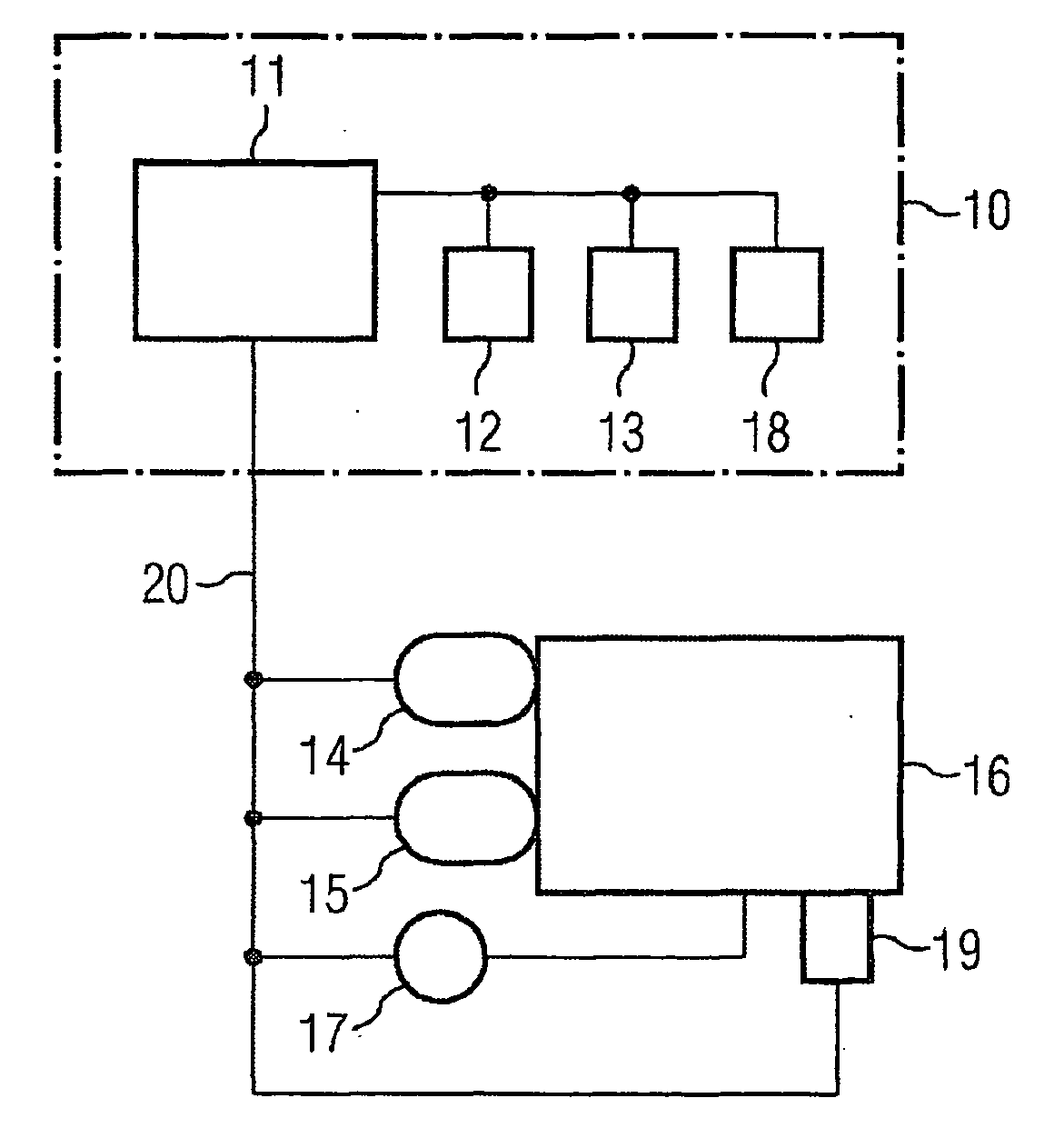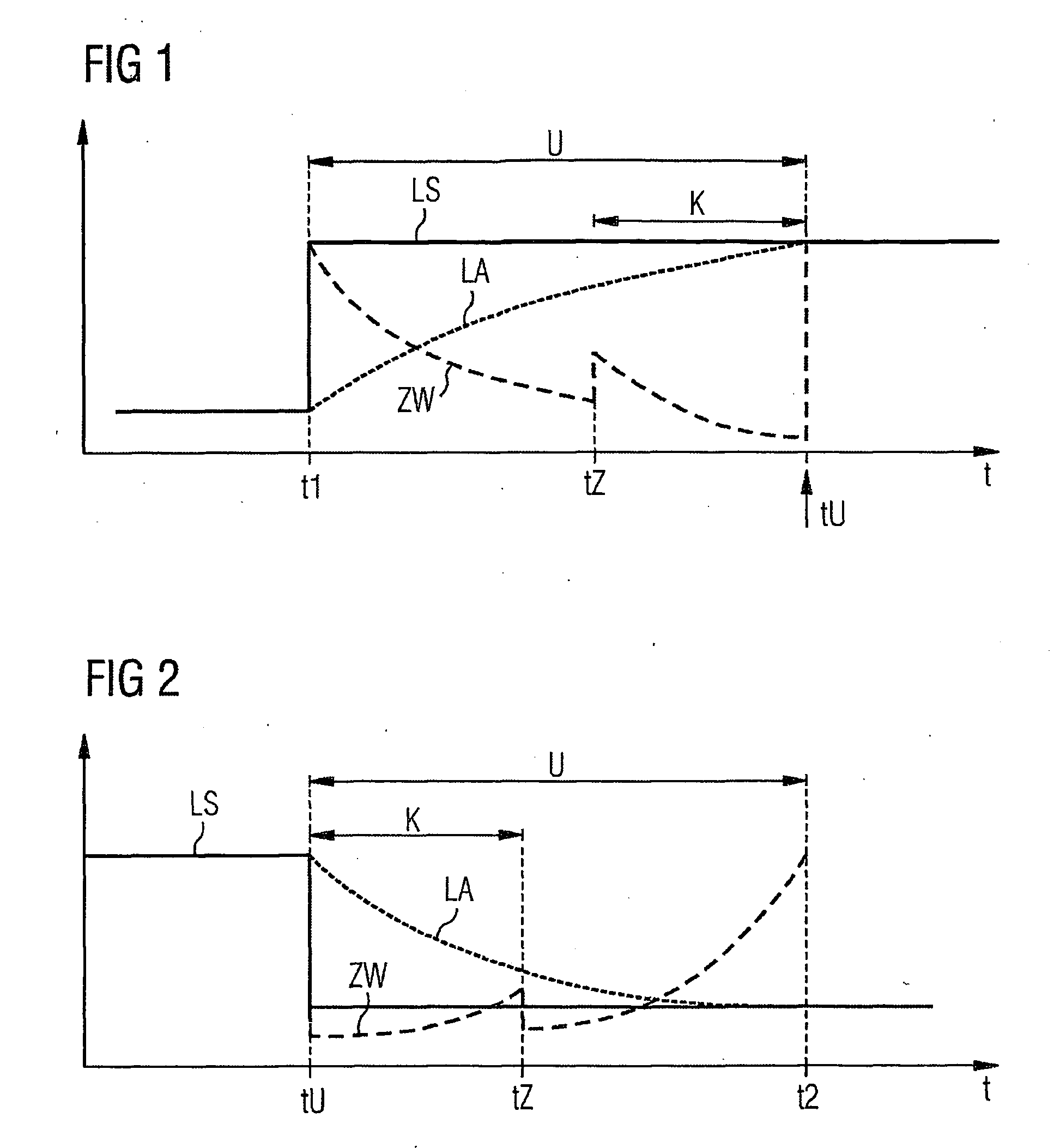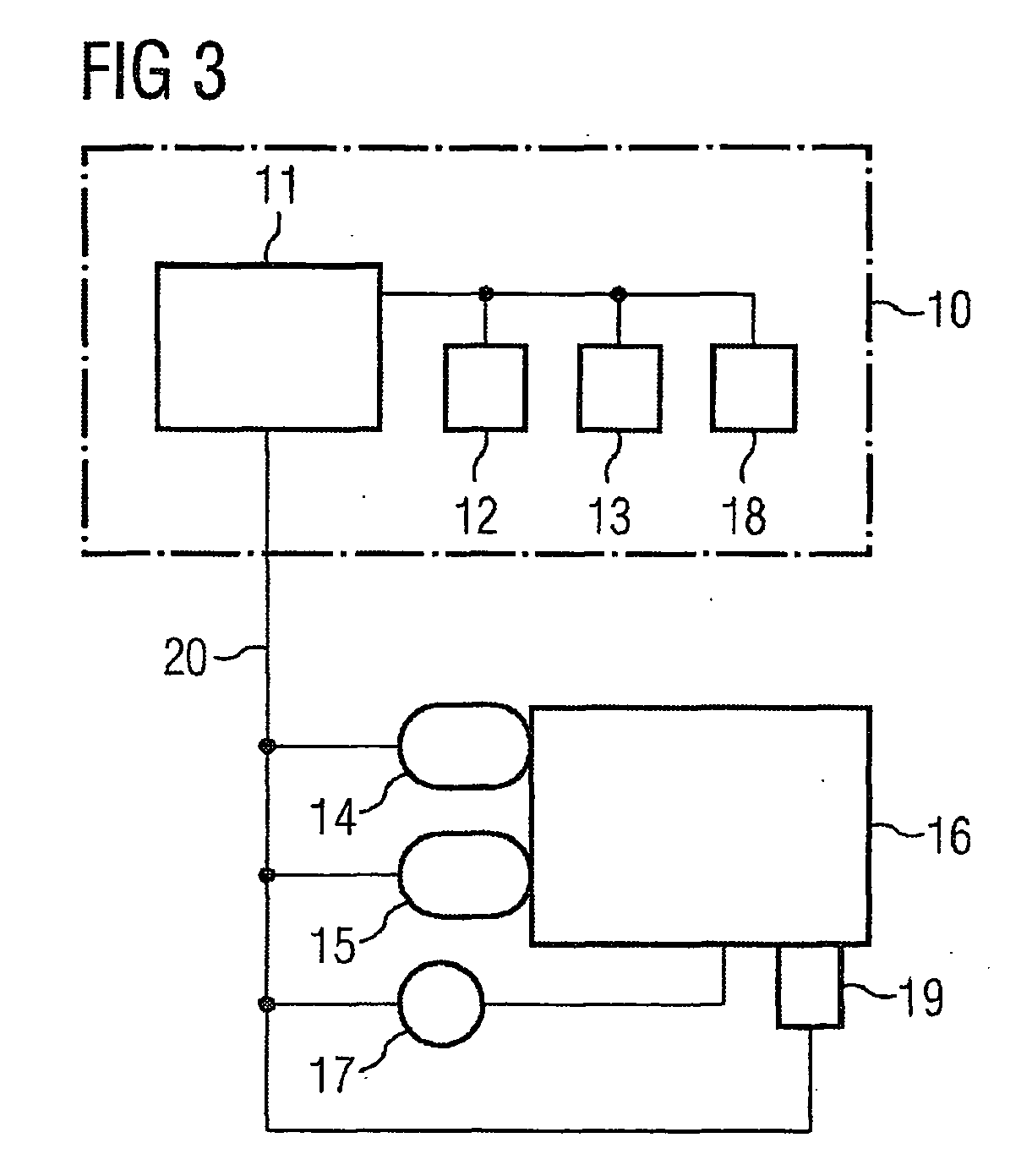Method and device for controlling the transition in a direct injection internal combustion engine
a technology of internal combustion engine and transition device, which is applied in the direction of electric control, machines/engines, instruments, etc., can solve the problems of irregular running of the internal combustion engine, inability to accept large amounts, and generally occurring step-change torques
- Summary
- Abstract
- Description
- Claims
- Application Information
AI Technical Summary
Benefits of technology
Problems solved by technology
Method used
Image
Examples
Embodiment Construction
[0020] The way in which the switchover between two modes of operation functions will be explained in more detail for an exemplary embodiment in accordance with the invention, as shown in FIG. 1, by reference to a diagram. By way of example, it is assumed that an internal combustion engine operated using fuel direct injection is to be switched over from operation with a large valve lift on the inlet and / or the exhaust valves to operation with a small valve lift. On the one hand this switchover will result in the torque generated being less, and on the other hand this mode of operation is more fuel-saving, so that under certain operating conditions, for example under partial load when the maximum torque is not demanded of the engine, a fuel-saving mode of operation with the small valve lift appears advantageous. As a result of the switchover to operation with a small valve lift, it is no longer possible for as much air to flow into the cylinders of the internal combustion engine as be...
PUM
 Login to View More
Login to View More Abstract
Description
Claims
Application Information
 Login to View More
Login to View More - R&D
- Intellectual Property
- Life Sciences
- Materials
- Tech Scout
- Unparalleled Data Quality
- Higher Quality Content
- 60% Fewer Hallucinations
Browse by: Latest US Patents, China's latest patents, Technical Efficacy Thesaurus, Application Domain, Technology Topic, Popular Technical Reports.
© 2025 PatSnap. All rights reserved.Legal|Privacy policy|Modern Slavery Act Transparency Statement|Sitemap|About US| Contact US: help@patsnap.com



